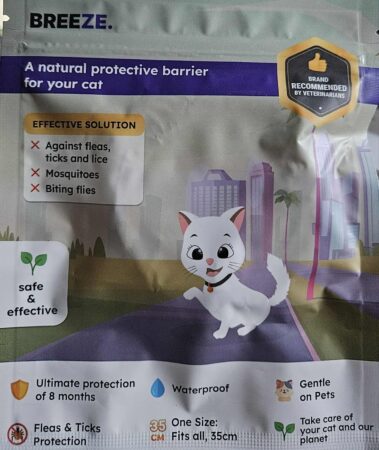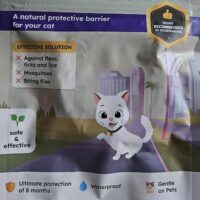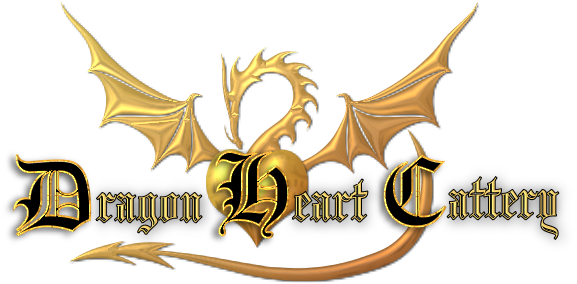This is a good site for ordering some of the products I use: www.RevivalAnimalHealth.com.
Here at the Cattery I feed my cats “Taste of the Wild” formula cat food and my kittens I feed the same. Taste of the Wild is a grain free recipe and for all stages of life. When my kittens are young and being weaned, I feed them canned food. I also supplement feed them goats milk. In addition I use nutritional yeast on their canned and dry food. It is good for their skin and coats and they just love it. I also once a month bath each one of my cats, this is not necessary but somehow that old saying, cleanliness is next to Godliness, just stuck with me. I use and recommend Advantage for flea control.

![]()
Please feel free to contact me. I welcome all comments and questions.
![]()

About a year ago a cat of mine got out side. She went into hiding and it took me over a week to catch her. I at one point almost gave up as I didn’t see her for a few days and thought that perhaps something got her. When I did catch her, I ended up with a flea problem. Which I am glad to say that I now have it under control and am pretty much flea free! This brand came through on my FB feed and they kept popping up. My first order I was very skeptical if these would work. I however am really happy with the outcome and these collars actually help me get my problem under control. They are alot less expensive than the chemical products that the vet pushes. These last for up to 8 months. I bought a five pack bundle and it was something like $89.00. Here is their web site. They make collars for dogs as well.
www.breezedo.com
 HCM IN RAGDOLLS
HCM IN RAGDOLLS
The information listed below was taken off the UC Davis web site:
Hypertrophic Cardiomyopathy is the most common disease in cats. Affected cats at risk of sudden cardiac death due to defects that produce increased left ventricular heart muscle thickness. In Ragdolls, the condition is inherited due to breed specific mutations in the cardiac myosin binding protein C gene.
The Ragdoll HCM mutation, known as R820W,is a single base pair change in MYBPC3 that is thought to alter the shape and function of this essential protein for normal heart muscle development. The same R820W mutation has been found to be associated with HCM and left ventricular non-compaction in humans (see reference below, Ripoll et al. 2010). Recent studies show cats that are heterozygous (1copy) for the mutation are not likely to show signs of the disease and may live a normal lifespan. Homozygous (2 copies) cats for the mutation are at high risk of developing severe HCM signs, usually between 1-2 years of age and have a greater likelihood of early cardiac death. Infrequently, homozygous cats do not show clinical signs of HCM. Breedings between 2 heterozygous cats are expected tp produce 25% high risk kittens. It is not recommended to use cats homozygous for the R820W mutation in a breeding program.
Results reported as:
| Test Result | Ragdoll HCM Status |
| N/N | Normal, cat does not have the Ragdoll HCM mutation |
| N/HCMrd | 1 copy of the Ragdoll HCM mutation present |
| HCMrd/HCMrd | 2 copies of the Ragdoll HCM mutation present; cat is at high risk for HCM |

 Information about my practices:
Information about my practices:
I am a closed cattery. I do not do outside breeding for people. When you take in someone else’s animal you never know what potential disease you might be taking a chance of bringing into your cattery. Hence , I just don’t do it. Over the years I have bred and produced a lot of kittens. I have not dealt with a lot of other breeders. I have over the years kept many kittens out of my own breedings for use in my breeding program. Where ever you see, Dragon Hearts, before my cats name you are seeing a cat of my breeding. I was fortunate when starting out to have had three different males, so I never had to in- bred my animals. With the deaths of my two oldest males (Moody Blues) & (Lord Duncan) from old age, I have been forced to go out and buy some new males from other breeders. I have over the years kept many females but no males. By starting out with healthy lines and keeping my own lines I have insured to have healthy lines to work with. I have had no problems with many of the normal cat diseases. Recently with in the last 6 years or so I started testing for the HCM gene in my adults. So far so good.
A couple of years ago (2013), I did take on three cats from a cattery that was closing, two females and one male. Un-beknown to me two of those adults each carried the HCM gene on one side of their genetic make up. I found this out only after having a few litters of kittens. The adults, themselves were healthy and did not have the disease. But bred togather they had the potential of producing HCM positive kittens. I started having a problem with HCM when I bred the one male to either one of the two females I had gotten. My first litter of five kittens I had one kitten that died from HCM. I ended up having three different kittens that died from HCM, out of three different litters. It was a horrible thing to have happened to me and my cattery. And, an allful thing for my pet buyers to have to deal with also. I did re-place those kittens for my kitten buyers and tested the adults that I had gotten. The adult cats that had the problems, I no longer have. I spayed and neutered and gave them away. This taught me a very important lesson about taking on adult cats from another breeder. Or for that matter buying any breeder kitten with out first having a HCM test done prior to purchasing. That got me worried even though prior to getting those three cats I had never had any problems with HCM. So, I decided to start testing my own lines and so far so good. None of my cats that I have tested so far carry the HCM gene. So, people write me and ask me about what kinds of testing I have done and I have only tested for HCM. I have never had a problem with PKD or FIV or any of the other cat diseases. And as long as I remain a closed cattery I hope to stay that way.
 I would like to tell you a little bit about the history of the Ragdoll :
I would like to tell you a little bit about the history of the Ragdoll :
The Ragdoll is a medium to semi-long haired breed. The Ragdoll was developed by Ann Baker in the 1960’s. The Ragdoll is so called because it it said the cat goes limp in your arms like a ragdoll. Ragdolls are placid and docile creatures, and are very affectionate. The Ragdoll is a large muscular cat, the males when mature can weigh as much as 20 lbs. And the females 15 lbs. It takes 3 years for the Ragdoll to fully mature. They are known for their soft, silky, non-matting fur. They are said to below sheddars but, I have found this to not always be true. The Ragdoll comes in a variety of colors. The colorpoint which is the color on the face, ears, legs, paws and tail while the rest of the body is one lighter color, usually a cream. Color points come in the Seal, Chocolate, Blue, Lilac, and Flame. In the patterns of Bi-Color, Lynx, and Tortie. A Ragdoll can also be mitted or non-mitted. The most eye-catching varieties are the Bi-Colors, with a striking feature of a white inverted V. This mask begins in the center of the forehead and runs past the eyes to the back of the chin. The chin, chest, underparts and paws are white. All Ragdoll kittens are born pure white and after a few weeks their color starts coming in.
Now about coloring : Rarest to most common.
#1: Creme’s are the #1 rarest of colors in the Ragdoll bred.
#2: Lilac color is second in rarity. Like the creme and Flame color, lilac coloring originated as a diluted of chocolate.
#3: Chocolate color visually are similar to Seals, but their fur is a lighter shade. Their body color is a whiteish, Ivory shade and their points (face, ears, feet and tail) are a light milk chocolate shade.
#4: Flames are often times referred to as Red. These cats are similar in color to Creme but they have much more pronounced shades of orange and red through out their coat. With their points having darker orange coloring.
#5: Fawn color is a dilute of Cinnamon
#6: Ciinnamon color in the Ragdolls have a reddish tone to them. Darker than a chocolate but reddish.
#7: Blue coloring is simply a greyish blue color. And are pretty common.
#8: Seal coloring is a dark chocolate color almost black and with age their points and coats do darken up.
All of these colors are available in Mitted (white paws), Bi-Color, Solid (no white), Tortie Points (similar to calicos) and Lynx.
